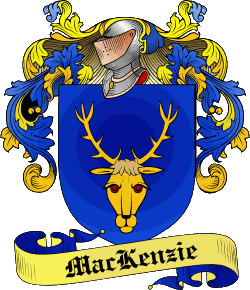Nob Hill Fun Fact #19: Why is there an elk on the Mackenzie House?

July 2015
The bust of a white stag centered below a framing arch of slate shingles is a symbol from the MacKenzie family coat of arms—denoting the doctor’s strong connection to the family’s Scottish roots. I would have loved to have been in the room when the client asked the architects of the 1887 Annex to the Portland Armory (now the Gerding Theater) “to stick an Elk on it”.
 A curiously rich and balanced blend of Richardsonian Romanesque and Shingle styles sets this important historic landmark apart from many homes in the neighborhood, through the dark slate shingles used as a dominant material in the exterior cladding. The building is rich with architectural detailing on both exterior and interior, and is constructed of quality materials throughout, including sandstone, slate, ornamental woodwork, and plaster. The use of rusticated Tenino stone is eye-catching. The light hue of the tower and chimney’s sandstone makes a striking contrast to the dark slate shingles. The elegant stones were imported from Tenino, Washington; when these stones were ordered in 1890 the quarry had just started to expand operations that led to a sandstone “boom town” that petered out between 1915 and 1920 as concrete replaced the use of sandstone in construction projects. The only more highly acclaimed house built in this style and material palette was the Julius Loewenberg House, constructed in the same year and demolished in 1960.
A curiously rich and balanced blend of Richardsonian Romanesque and Shingle styles sets this important historic landmark apart from many homes in the neighborhood, through the dark slate shingles used as a dominant material in the exterior cladding. The building is rich with architectural detailing on both exterior and interior, and is constructed of quality materials throughout, including sandstone, slate, ornamental woodwork, and plaster. The use of rusticated Tenino stone is eye-catching. The light hue of the tower and chimney’s sandstone makes a striking contrast to the dark slate shingles. The elegant stones were imported from Tenino, Washington; when these stones were ordered in 1890 the quarry had just started to expand operations that led to a sandstone “boom town” that petered out between 1915 and 1920 as concrete replaced the use of sandstone in construction projects. The only more highly acclaimed house built in this style and material palette was the Julius Loewenberg House, constructed in the same year and demolished in 1960.
Update September 2018: MacKenzie in Gaelic is “Caberfeidh” which translates as “Deer Antlers”. I have learned that in Scotland there are Red Stages that are similar to our American Elk. It is possible that that is not an elk at all.
Update April 1, 2020: Go watch some Outlander and get back to me with more information on the clan. With Covid-19 out and about we are not leading any tours. It is still a joy to know that William Temple House sold the building but is able to rent it back and is helping feed people at this challenging time.
